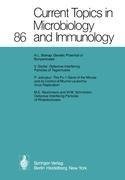
-
 Anglický jazyk
Anglický jazyk
Current Topics in Microbiology and Immunology
Autor: W. Arber
1.1 Classification of Togaviruses The family, Togaviridae, is composed of the alphaviruses, the flaviviruses, rubella (a rubivirus), and the pestiviruses (Fenner, 1976). Of these four genera, two (the alpha- and flaviviruses) are transmitted by blood-sucking... Viac o knihe
Na objednávku
98.99 €
bežná cena: 109.99 €
O knihe
1.1 Classification of Togaviruses The family, Togaviridae, is composed of the alphaviruses, the flaviviruses, rubella (a rubivirus), and the pestiviruses (Fenner, 1976). Of these four genera, two (the alpha- and flaviviruses) are transmitted by blood-sucking arthropods, specif ically mosquitoes and ticks. Among the togaviruses, extensive studies of defective interfering (DI) particles have so far been carried out only with Sindbis virus (SV) and Semliki Forest virus (SFV), both members of the alphavirus genus. Since these viruses are so similar, in most cases it will be assumed that what is true of one is also true of the other. 1.2 Definition of Defective Interfering (DI) Particles Defective interfering viral particles, as defined by Huang (1973), have the follow ing properties: (1) they are deletion mutants and therefore lack large amounts of the genetic material present in the standard virus; (2) they contain the same viral structural proteins as standard virus; (3) they are unable to replicate alone; however, they are replicated in cells co-infected with standard virions; and (4) at the same time as they require standard virus to replicate, they inhibit the replication of standard virus and hence are interfering.
- Vydavateľstvo: Springer Berlin Heidelberg
- Rok vydania: 2011
- Formát: Paperback
- Rozmer: 244 x 170 mm
- Jazyk: Anglický jazyk
- ISBN: 9783642673436












